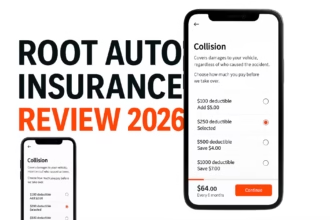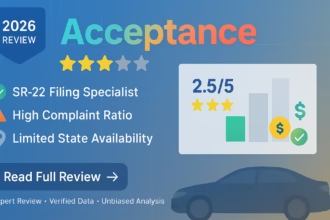The world of corporate finance is a fascinating realm where businesses and investors alike explore innovative ways to raise capital, mitigate risks, and unlock growth potential. Among the array of financial instruments available, convertibles stand out as a unique hybrid, offering a blend of debt and equity features that can benefit both issuers and holders.
In this comprehensive guide, we’ll delve into the intricacies of convertibles, unraveling their mechanics, types, valuation considerations, and strategic applications in corporate finance. Whether you’re a seasoned investor, a budding entrepreneur, or a student of business studies, this article aims to equip you with a deep understanding of these versatile financial instruments.
What are Convertibles?
At their core, convertibles are securities that can be converted into another form of security, typically common stock of the issuing company. The most common types of convertibles are convertible bonds and convertible preferred shares. These instruments initially function as debt or preferred equity, providing fixed income to the holder in the form of interest or dividend payments. However, the true allure of convertibles lies in their ability to be converted into a predetermined number of common shares, granting the holder the potential to benefit from the company’s future growth and stock price appreciation.
Types of Convertibles
The world of convertibles is diverse, offering a range of instruments tailored to meet different investment objectives and risk appetites. Let’s explore some of the most prominent types:
Convertible Bonds
Convertible bonds are perhaps the most well-known and widely used form of convertibles. They function like traditional bonds, paying a fixed interest rate (coupon) to the bondholder until maturity or conversion. However, the bondholder also holds the option to convert their bond into a predetermined number of common shares at a predefined conversion ratio and conversion price. This dual nature of convertible bonds makes them appealing to investors seeking both income and growth potential.
Convertible Preferred Shares
Convertible preferred shares share similarities with convertible bonds but are classified as equity rather than debt. These shares typically carry a fixed dividend rate and can be converted into common shares at a predetermined ratio and price. Holders of convertible preferred shares enjoy the benefits of dividend payments and the potential for capital appreciation through conversion, while also enjoying preferential treatment over common stockholders in terms of claims on assets and dividends.
Mandatory Convertibles
As the name suggests, mandatory convertibles are securities that must be converted into common stock by a specific date, as opposed to optional convertibles where conversion is at the holder’s discretion. This type of convertible is often used by companies seeking to raise capital while delaying the immediate dilution of common shares.
Convertible Debentures
Convertible debentures are unsecured debt instruments that can be converted into common shares. Unlike convertible bonds, which are typically secured by collateral, convertible debentures rely solely on the issuer’s creditworthiness and ability to repay the debt.
Convertible Notes
Convertible notes, also known as convertible loan notes, are short-term debt instruments that convert into equity at a predetermined price or valuation cap. They are commonly used by startups and early-stage companies as a way to raise funds quickly without having to establish a formal valuation or issue equity immediately.
Valuation and Key Factors Influencing Convertibles
Valuing convertibles is a complex endeavor that requires considering various factors, including the underlying stock price, volatility, interest rates, credit risk, and conversion terms.
Generally, the value of a convertible security comprises two components: the investment value (or straight bond value) and the conversion value. The total value is typically the greater of these two components.
Here are some key factors that influence the value and attractiveness of convertibles:
Underlying Stock Price
The price of the underlying common stock plays a pivotal role in determining the value of a convertible security. As the stock price rises, the conversion option becomes more valuable, increasing the overall value of the convertible.
Volatility
Higher volatility in the underlying stock price generally increases the value of the conversion option and, consequently, the overall value of the convertible security. This is because higher volatility increases the likelihood of the stock price exceeding the conversion price, making conversion more attractive.
Interest Rates
Changes in interest rates can impact the value of convertibles. Rising interest rates tend to decrease the value of convertible bonds, as the fixed coupon payments become less attractive relative to newly issued bonds with higher coupons.
Credit Risk
The creditworthiness of the issuing company plays a crucial role in the valuation of convertibles. Higher credit risk decreases the value of the straight bond component but may increase the value of the conversion option, as investors may be more inclined to convert their holdings to equity in the event of financial distress.
Conversion Terms
The specific conversion terms, such as the conversion ratio, conversion price, and any caps or floors, significantly impact the value of a convertible security. More favorable conversion terms increase the value of the conversion option and, consequently, the overall value of the convertible.
Strategic Applications of Convertibles in Corporate Finance
Convertibles offer a unique blend of features that make them attractive to both issuers and investors. From a corporate finance perspective, convertibles can serve various strategic purposes, including:
Cost-Effective Capital Raising
For companies seeking to raise capital, issuing convertibles can be a cost-effective alternative to traditional debt or equity financing. Convertible bonds typically carry lower coupon rates than non-convertible bonds, as the conversion option acts as an enticement for investors.
Delayed Equity Dilution
Convertibles allow companies to raise funds without immediately diluting existing shareholders’ ownership. The conversion occurs at a later date, providing companies with additional time to grow and potentially reduce the dilutive impact.
Flexible Capital Structure Management
Convertibles offer companies flexibility in managing their capital structure. If a company’s stock price performs well, the convertible securities can be converted into equity, effectively reducing the company’s debt burden. Conversely, if the stock price underperforms, the securities can remain as debt, providing the company with a more stable capital structure.
Investor Attraction
The hybrid nature of convertibles can appeal to a broader range of investors, including those seeking fixed income and those seeking growth potential. This diversified investor base can facilitate more efficient capital raising and potentially improve a company’s access to capital markets.
Convertibles in the Startup Ecosystem
Convertibles have gained significant traction in the startup ecosystem, where they are often used as a means of raising capital before a formal valuation or equity financing round. Two prominent examples are Simple Agreements for Future Equity (SAFEs) and Keep It Simple Securities (KISS).
SAFEs and KISS share similarities with convertible notes but are designed to be simpler and more startup-friendly. They typically do not carry interest or maturity dates, reducing the risk of cash flow constraints for early-stage companies
Benefits and Drawbacks of Convertibles
Like any financial instrument, convertibles come with their own set of advantages and disadvantages that investors and companies should carefully consider.
Benefits of Convertibles
For Investors
Downside Protection: Convertibles offer a degree of downside protection through their fixed-income component, mitigating the risk of significant losses compared to investing solely in common stock.
Income and Growth Potential: Convertibles provide a combination of fixed income (through interest or dividend payments) and the potential for capital appreciation if the underlying stock performs well and conversion is exercised.
Diversification: By combining features of both debt and equity, convertibles can help investors diversify their portfolios and achieve a more balanced risk-reward profile.
For Issuers
Lower Cost of Capital: Companies can typically issue convertibles with lower coupon rates compared to non-convertible debt, reducing their overall cost of capital.
Delayed Equity Dilution: Convertibles allow companies to raise capital without immediately diluting existing shareholders’ equity, providing a buffer period for potential growth and value creation.
Improved Financial Flexibility: Convertibles offer flexibility in managing a company’s capital structure, allowing for potential conversion to equity or continued treatment as debt, depending on the company’s performance and strategic objectives.
Drawbacks of Convertibles
For Investors:
Capped Upside Potential: Many convertible securities include provisions that cap the upside potential for investors, such as call provisions that allow the issuer to force conversion or redeem the securities at a predetermined price.
Complexity: Valuing and analyzing convertibles can be complex due to the multitude of factors involved, requiring investors to have a strong understanding of financial modeling and option pricing methodologies.
Credit Risk: Convertibles are subject to credit risk, as the issuer’s ability to make interest or dividend payments and repay principal at maturity depends on their financial health.
For Issuers
Potential Equity Dilution: If the conversion option is exercised, the existing shareholders’ ownership will be diluted, potentially impacting the company’s valuation and earnings per share.
Accounting Complexity: Issuing convertibles can introduce complexities in accounting and financial reporting, as the instruments must be separated into their debt and equity components for proper recognition and measurement.
Refinancing Risk: If a convertible security is not converted and reaches maturity, the issuing company may face the need to refinance the debt, which could be challenging or costly depending on market conditions and the company’s financial position.
Convertibles in Action: Real-World Examples
To illustrate the practical applications of convertibles, let’s explore a few real-world examples:
Tesla’s Convertible Bond Offerings
In March 2019, Tesla Inc. issued $1.84 billion in convertible senior notes due in 2024. The notes carried an interest rate of 2% and were convertible into Tesla’s common stock at an initial conversion price of $309.83 per share. This convertible offering allowed Tesla to raise capital while minimizing the immediate dilution of existing shareholders’ equity.
Snap Inc.’s Convertible Notes for Acquisitions
In April 2021, Snap Inc., the parent company of Snapchat, announced the issuance of $1 billion in convertible senior notes due in 2027. The proceeds were intended to fund potential acquisitions and strategic investments, allowing Snap to pursue growth opportunities while maintaining financial flexibility.
Stripe’s Convertible Note Financing Round
In March 2023, Stripe, the leading online payment processing company, raised $6.5 billion in a convertible note financing round led by various investors, including Andreessen Horowitz and Sequoia Capital. This funding round, which valued Stripe at $50 billion, provided the company with capital to fuel its growth and expansion plans while delaying the need for a traditional equity financing round.
These examples demonstrate the versatility of convertibles in addressing various corporate finance needs, such as raising capital, pursuing growth opportunities, and maintaining financial flexibility.
Conclusion
Convertibles are truly unique financial instruments that offer a compelling combination of fixed income and growth potential. By blending elements of debt and equity, they provide issuers with flexible financing options and investors with a diversified risk-reward profile.
As companies continue to innovate and seek alternative sources of capital, convertibles are likely to remain a valuable tool in the corporate finance arsenal. For investors, a thorough understanding of convertibles can open doors to new investment opportunities and portfolio diversification strategies.
Whether you’re an entrepreneur exploring fundraising options, an investor seeking to optimize your portfolio, or a student of finance delving into the intricacies of corporate finance, mastering the nuances of convertibles is an invaluable skill that can yield significant rewards.
By leveraging the insights and strategies outlined in this comprehensive guide, you can navigate the world of convertibles with confidence, unlocking new avenues for growth, risk management, and financial success.
Frequently Asked Questions (FAQs)
What happens when a convertible bond matures?
When a convertible bond matures, the bondholder typically has two options:
- convert the bond into the specified number of shares of the issuer’s common stock, or
- receive the principal amount (face value) of the bond. The bondholder would choose the option that provides the higher value at the time of maturity.
Are convertibles classified as debt or equity?
Convertibles are considered hybrid securities, combining features of both debt and equity. For accounting purposes, convertibles are typically separated into their debt and equity components, with the debt component recorded as a liability and the equity component (the conversion option) recorded as part of shareholders’ equity.
Can a company force conversion of convertible bonds?
Yes, many convertible bonds include call provisions that allow the issuing company to force conversion or redeem the bonds at a predetermined price and time. This feature protects the company from excessive dilution if the stock price significantly exceeds the conversion price.
How does a convertible bond’s conversion ratio impact its value?
The conversion ratio, which determines the number of shares an investor receives upon conversion, is a critical factor in valuing a convertible bond. A higher conversion ratio (more shares per bond) increases the value of the conversion option and, consequently, the overall value of the convertible bond.
Can convertibles be issued by startups or private companies?
Yes, convertibles are commonly used by startups and private companies as a way to raise capital before a formal equity financing round or IPO. Instruments like SAFEs and convertible notes are popular among early-stage companies seeking funding from venture capitalists and angel investors.





